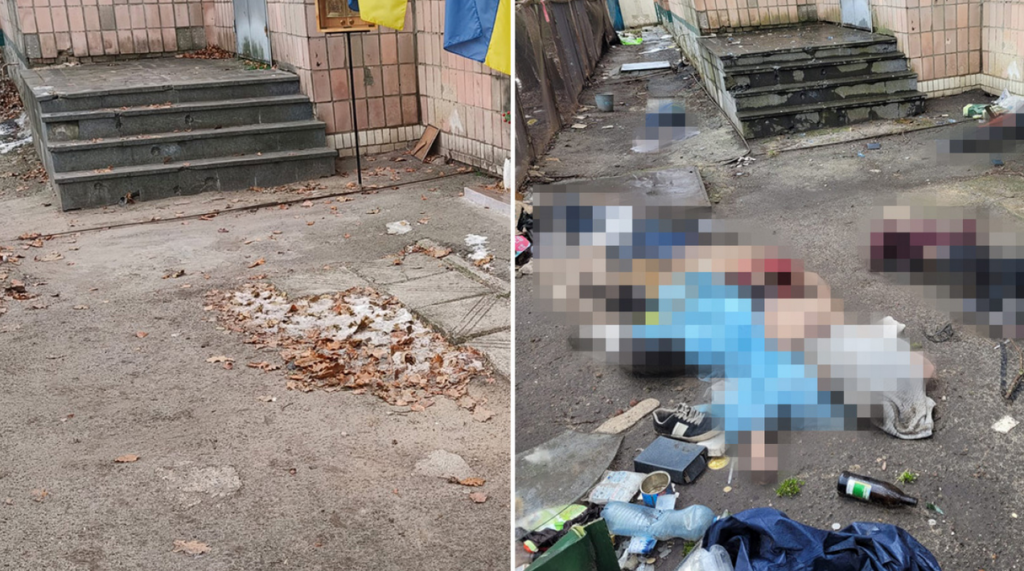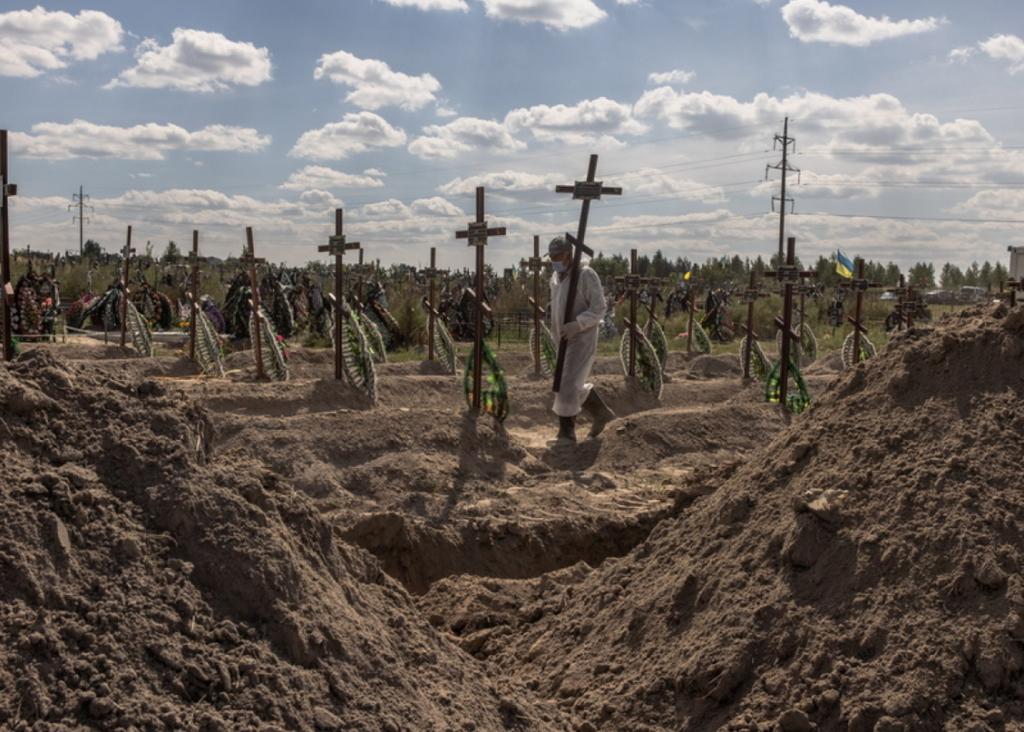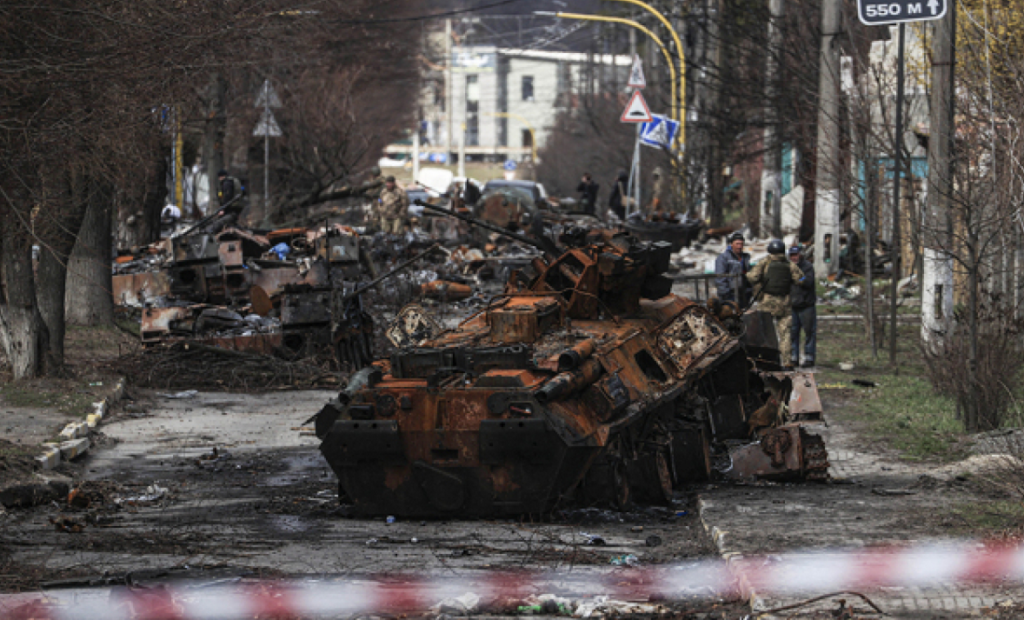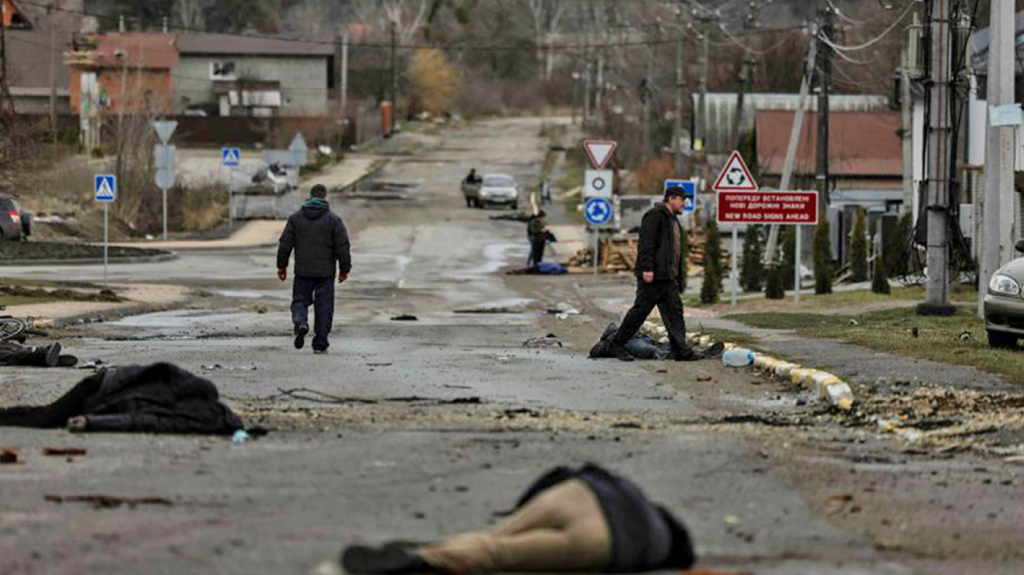Three years after the atrocities and the suburbs of Kiev, Bucha and Irpin, still resemble war and death.
The two suburbs to the northwest of the Ukrainian metropolis were under Russian occupation for nearly two months.

The Russian army turned these two areas into supply bases and spread terror and death among the civilian population.
Especially in Bucha, since April 1, 2022 and the withdrawal of Russian forces from the points due to the counter-attack of Ukrainian forces, the absolute – full and cruelest picture of the war was revealed.

Hundreds of civilians dead in the streets, in homes and in mass graves opened by the Russians leaving the area – essentially disorderly.
Protothema shortly after three years of war was in the areas in question.

The church of Agios Andreas still stands despite heavy bombing by both Russians and Ukrainians at the time, but its courtyard, despite being covered by a white veil of snow, still gives you a deep sense of sadness.
Even if you don’t pay attention to the wall with the names of those identified for weeks by Ukrainian and European authorities, you get the feeling that something extremely bad has happened at the site.

In addition to the bodies recovered from the mass grave, more than 150 more people from that suburb are still considered missing three years later.
Ukrainian authorities have so far claimed that these people were abducted by the Russians were used as “shields” while fleeing the area and ultimately executed at an as-yet unknown location either in Ukrainian or Belarusian territory.
Just outside Bucha the Ukrainians swept away the Russian forces and by the end of April the “siege” of Kiev was over.

The Moscow forces retreated from all points around the country’s capital and fighting intensified in the east of the country where it continues to rage to this day.
By decision of Volodymyr Zelensky, the last of the Russian tanks and army transports destroyed by Ukrainian hands and the British Javelin were left on the side of the road at the largest entry and exit point in the region.
You cannot approach the area without seeing with your own eyes the “carcasses” of war, realizing the distance between death and survival.
Ask me anything
Explore related questions





